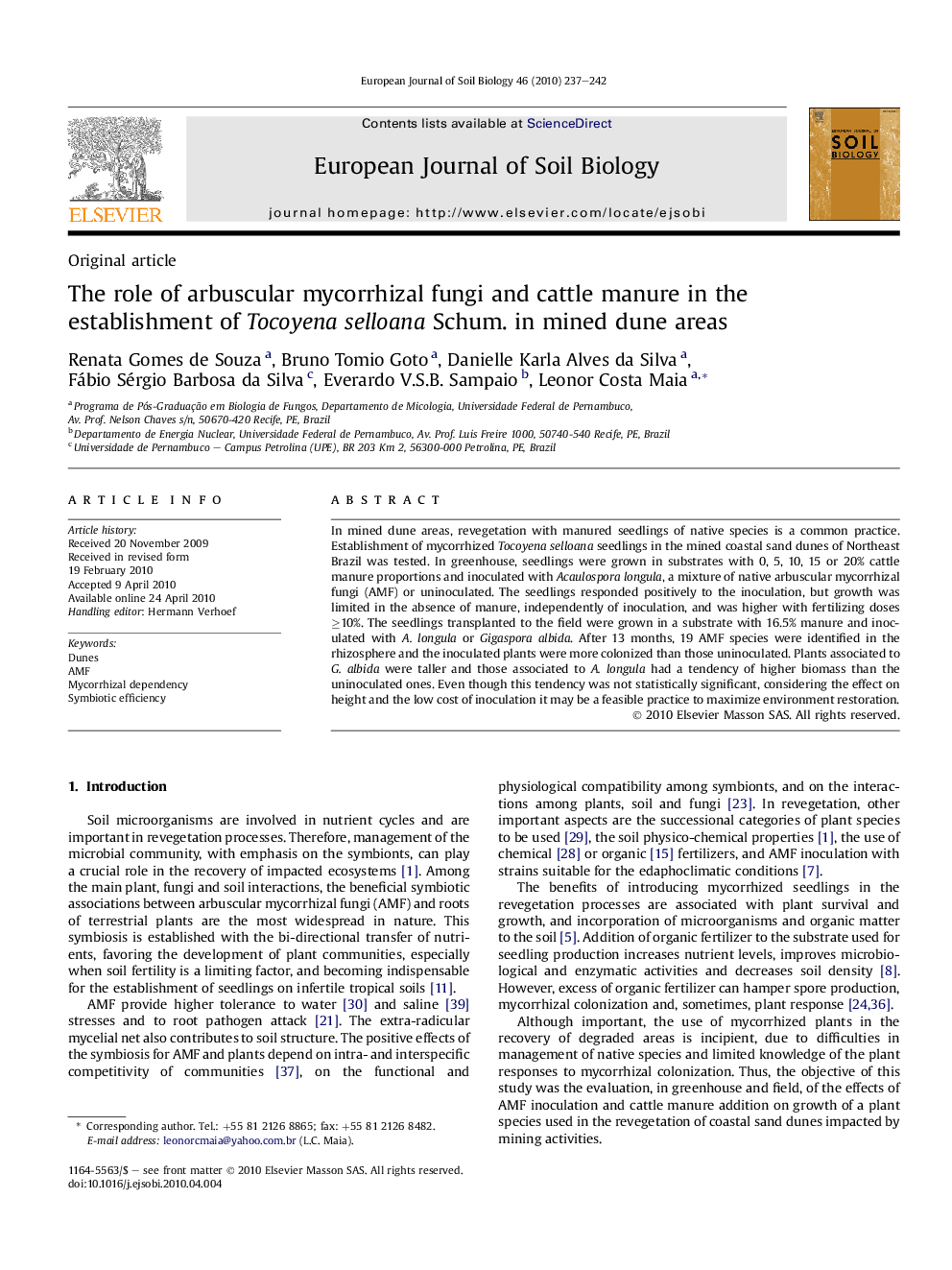| Article ID | Journal | Published Year | Pages | File Type |
|---|---|---|---|---|
| 4392125 | European Journal of Soil Biology | 2010 | 6 Pages |
In mined dune areas, revegetation with manured seedlings of native species is a common practice. Establishment of mycorrhized Tocoyena selloana seedlings in the mined coastal sand dunes of Northeast Brazil was tested. In greenhouse, seedlings were grown in substrates with 0, 5, 10, 15 or 20% cattle manure proportions and inoculated with Acaulospora longula, a mixture of native arbuscular mycorrhizal fungi (AMF) or uninoculated. The seedlings responded positively to the inoculation, but growth was limited in the absence of manure, independently of inoculation, and was higher with fertilizing doses ≥10%. The seedlings transplanted to the field were grown in a substrate with 16.5% manure and inoculated with A. longula or Gigaspora albida. After 13 months, 19 AMF species were identified in the rhizosphere and the inoculated plants were more colonized than those uninoculated. Plants associated to G. albida were taller and those associated to A. longula had a tendency of higher biomass than the uninoculated ones. Even though this tendency was not statistically significant, considering the effect on height and the low cost of inoculation it may be a feasible practice to maximize environment restoration.
